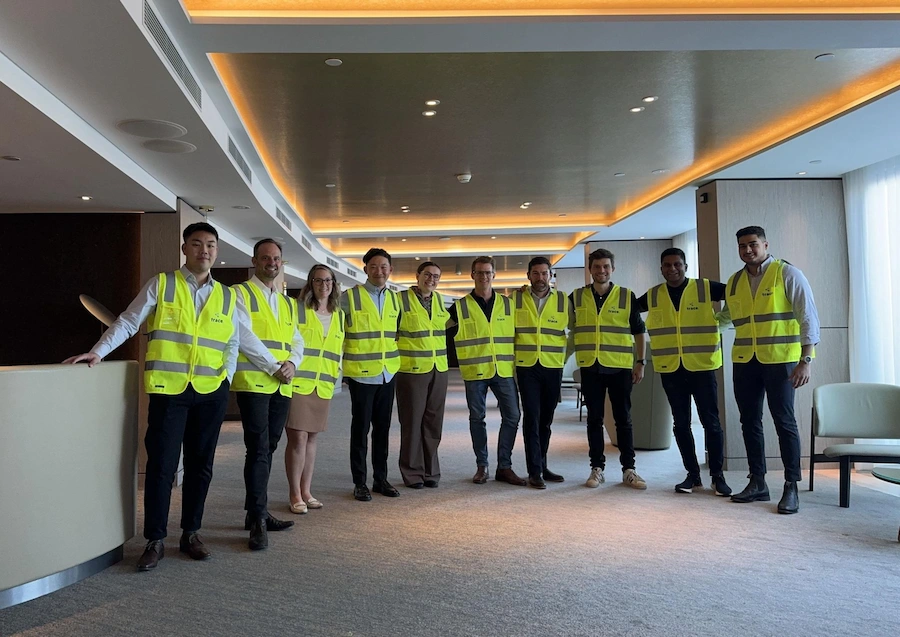Ready to turn insight into action?
We help organisations transform ideas into measurable results with strategies that work in the real world. Let’s talk about how we can solve your most complex supply chain challenges.

Strengthening Supply Chain Resilience: A Tactical Blueprint for Businesses
In today’s interconnected global market, the complexity of supply chains exposes businesses to a variety of risks. Effective management of these risks is not just about crisis aversion; it’s about building a resilient, responsive, and cost-efficient supply chain. This in-depth guide dives into how businesses can conduct comprehensive supply chain risk audits and implement robust strategies to manage these risks, focusing on supplier relationships, sourcing strategies, inventory health, and other strategic factors.

Comprehensive Supply Chain Risk Audits
The Foundation of Risk Management
Supply chain risk audits are critical to identify vulnerabilities and to formulate mitigation strategies. They involve a detailed analysis of every supply chain link, from raw material sourcing to product delivery.
Implementing Audits
- Involving cross-functional teams for a holistic assessment.
- Using advanced analytical tools to evaluate risk factors like supplier reliability, logistical challenges, and market volatility.
Managing Supplier and Partner Exposure
Assessing Supplier Reliability
Heavy dependence on specific suppliers or partners can be a significant risk. A disruption in their operation can have a cascading effect on the entire supply chain.
Diversification Strategies
- Identifying alternative suppliers and developing secondary relationships.
- Creating contingency plans for potential supplier failures.
Tackling Sourcing Location Risks
Geopolitical and Environmental Considerations
The choice of sourcing locations is influenced by geopolitical stability, environmental policies, and socio-economic factors, which can all pose risks to supply chain continuity.
Mitigating Location-Based Risks
- Conducting risk assessments focused on geopolitical stability and environmental factors.
- Exploring regional sourcing options to minimize dependency on volatile international markets.
Addressing Supplier Concentration Risks
The Perils of Over-Reliance
Relying heavily on a single region or a limited group of suppliers can leave businesses vulnerable to regional disruptions, political instability, or economic downturns.
Diversification as a Key Mitigation Tool
- Spreading procurement across diverse regions and industries.
- Periodically reassessing the supplier mix to align with current risk profiles.
Inventory Process and Planning Risks
Streamlining Inventory Management
Inventory management encompasses the planning, control, and execution of storing goods, and inefficiencies here can lead to increased costs and reduced service quality.
Enhancing Inventory Processes
- Employing strategies like demand forecasting and JIT inventory to minimize excess stock.
- Adopting technology solutions for real-time inventory tracking and management.
Navigating Inventory Health Challenges
Overcoming Obsolescence and Slow-Moving Stock
Excessive quantities of obsolete or slow-moving inventory tie up valuable resources and capital, reducing operational efficiency.
Strategies for Healthy Inventory
- Regular analysis of inventory turnover rates.
- Implementing automated systems for early detection of slow-moving items.
Strategic Risk Considerations
Beyond the Operational Horizon
Strategic risks involve broader market shifts, changes in consumer behavior, technological advancements, and evolving regulatory landscapes.
Addressing Strategic Risks
- Staying attuned to market trends and technological developments.
- Ensuring adherence to all relevant compliance and regulatory standards.
Real-World Applications and Success Stories
Case Study: Australian Retail Chain
An Australian retail chain faced significant supply chain disruptions due to over-reliance on offshore suppliers. Post a comprehensive risk audit, they diversified their supplier base and incorporated local suppliers, reducing lead times and mitigating disruption risks.
Manufacturing Success Story
A manufacturing firm experienced challenges with inventory obsolescence. By implementing an advanced inventory management system, they significantly reduced their stock of outdated products, freeing up resources and storage space.
Embracing Technological Innovations
The Digital Transformation of Risk Management
Incorporating digital tools and technologies is crucial for modern supply chain risk management.
Technology Implementations
- Utilising AI and machine learning for predictive risk analysis.
- Implementing cloud-based supply chain management systems for enhanced visibility and control.
Cultivating a Risk-Conscious Culture
The Human Factor in Risk Management
Building a risk-aware culture within the organization is as crucial as implementing technological solutions.
Training and Empowerment
- Regular training programs on risk identification and mitigation.
- Empowering employees to take proactive measures against perceived risks.
In the realm of global business, understanding and managing supply chain risks is a strategic imperative. Through comprehensive audits, diversified sourcing strategies, effective inventory management, and a keen eye on strategic risks, businesses can build resilient supply chains capable of withstanding various disruptions. Embracing technology and fostering a risk-aware organizational culture further solidify these efforts, positioning businesses for long-term success and sustainability.
Ready to turn insight into action?
We help organisations transform ideas into measurable results with strategies that work in the real world. Let’s talk about how we can solve your most complex supply chain challenges.









